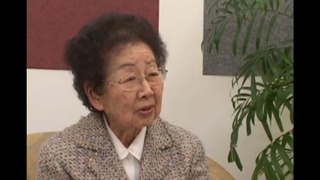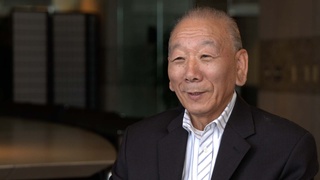Interviews
East First Street the hub of Japanese American community
East First Street was very…the center, the hub of Japanese American community. Everybody came there. After the war, you know, it wasn’t that way. People didn’t go there. There was this kind of fear of, you know, you just want to melt into the walls there. And then it became…by then, I think it became…it was either African American or Mexican.
Because I wrote an article about Little Tokyo and so I had to do some research on that. But the most ironic thing that happened for me was that when I was a majorette, when I was quite young – 14, 15 – and I used to be a drum majorette for a drum and bugle corps in Long Beach. The Koyasan Boy Scout drum and bugle corps was forming again in East LA or East First Street and I think it was one of the first Nisei Weeks that they were going to have again. So it must’ve been ’48 or ’49, right? So they asked me to come and be…march with them. So I did and I remember marching down First Street, going by the Far East Café and so forth, you know, twirling my baton and all this with these 2 other Japanese girls.
I don’t know who they were but someone took a picture of it, of that particular picture and somebody called me up. Who was it? And said they were trying to identify who the majorettes were. They knew the 2 ones on the side. Could that be Jeanne Wakatsuki? And this guy named Ted Kumori, who was a Boy Scout at the time, recognized me and so somebody called me up. Was it Edward Takahashi? Because they’re doing some kind of celebration for the Koyasan and they wanted to check and see if that’s me. And I remember. I said, “Yeah, that’s me marching.”
So when I was the…what do you call that for Nisei Week? A couple of years ago, I was the Grand Marshal, whatever it is. You know, they asked me to come down and so we sit in the car there. And the Koyasan boys – Boy Scout – were the band that leads that. I’m telling you, I cried throughout that whole parade. It was so…I’d never been back. And here they were. And we passed the Far East Café, which they were tearing down, and I said, “Oh my god, I’m having déjà vu, but I’m riding in this convertible.” But 50 years ago, I was marching in front of that Boy Scout band.
Date: December 27, 2005
Location: California, US
Interviewer: John Esaki
Contributed by: Watase Media Arts Center, Japanese American National Museum






